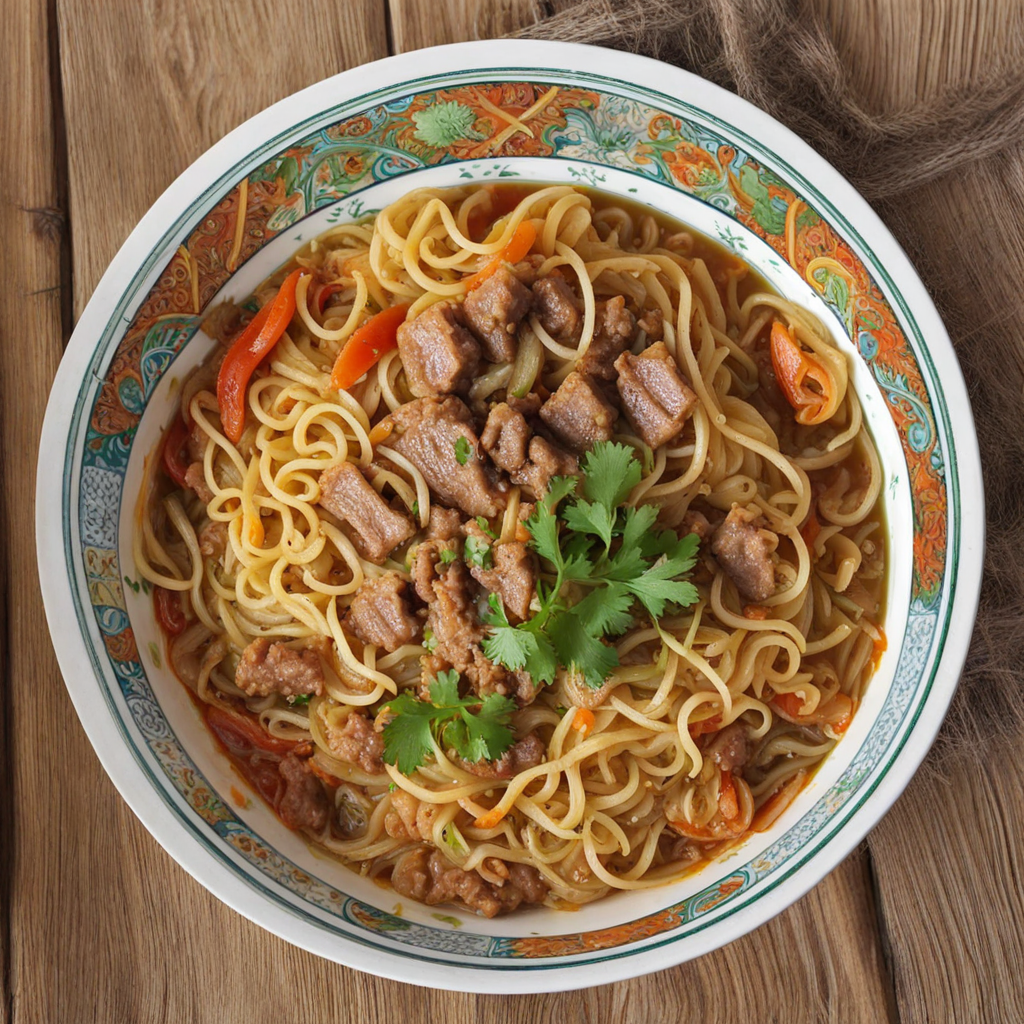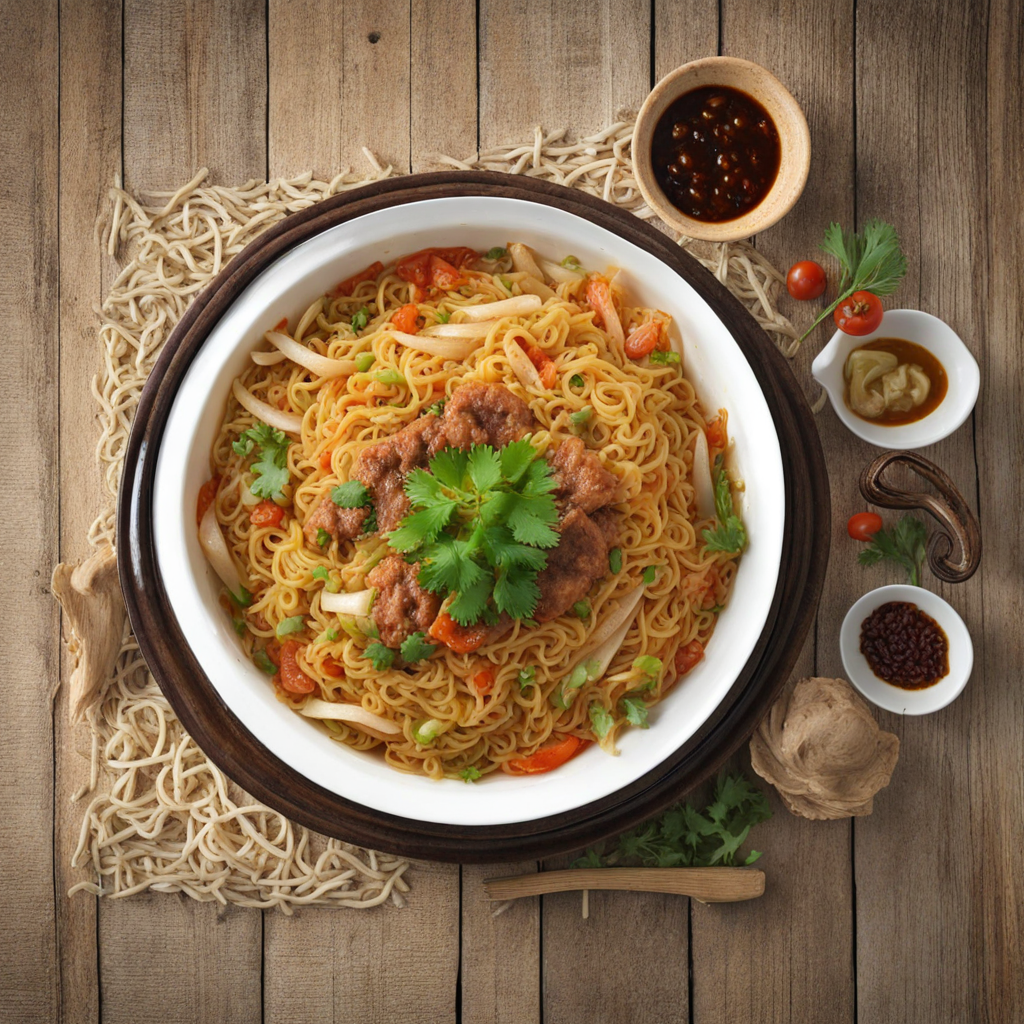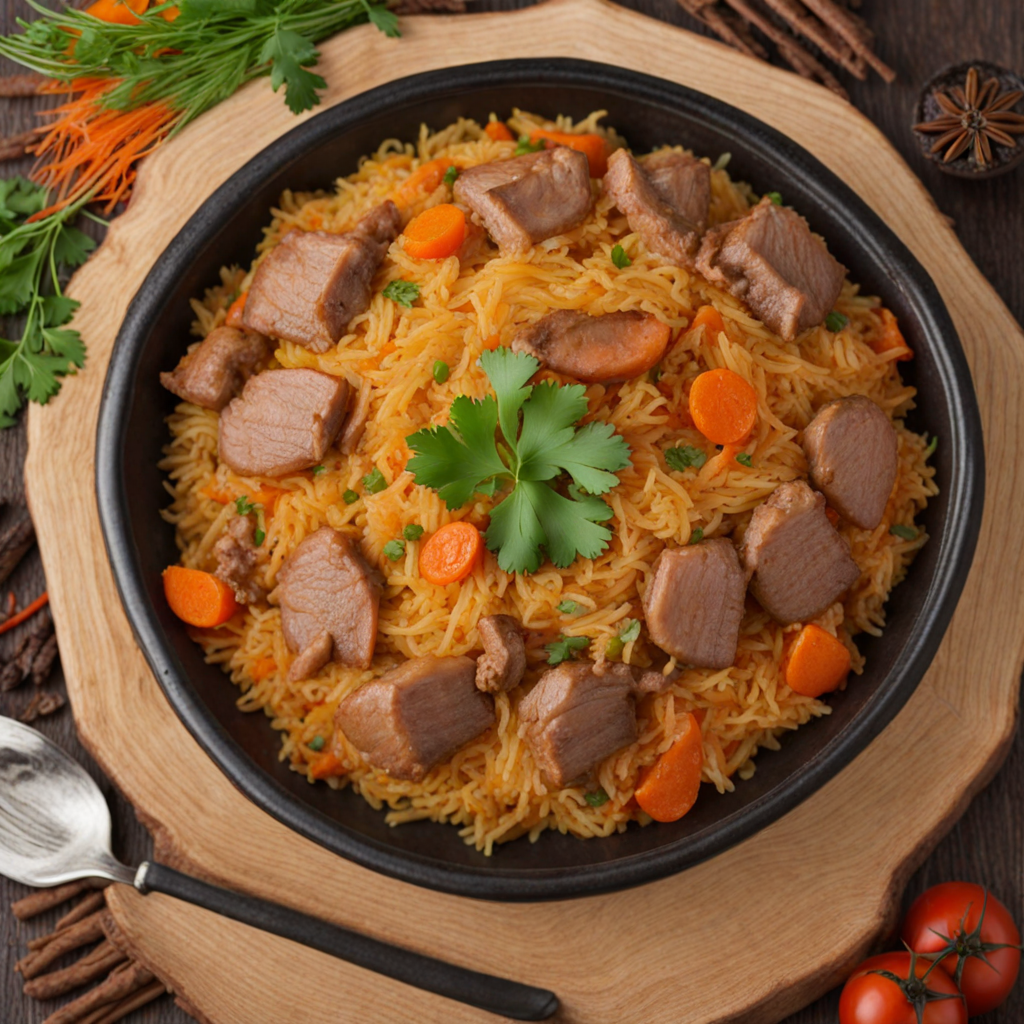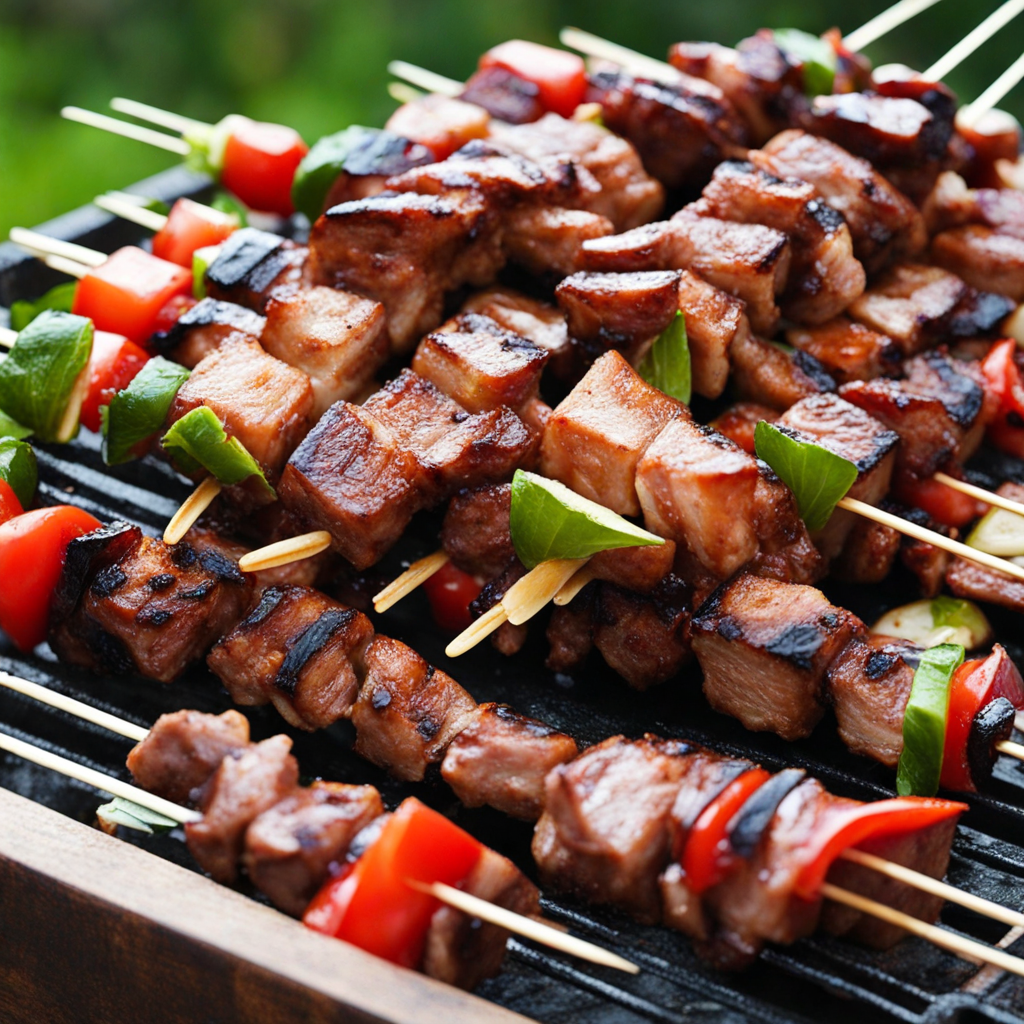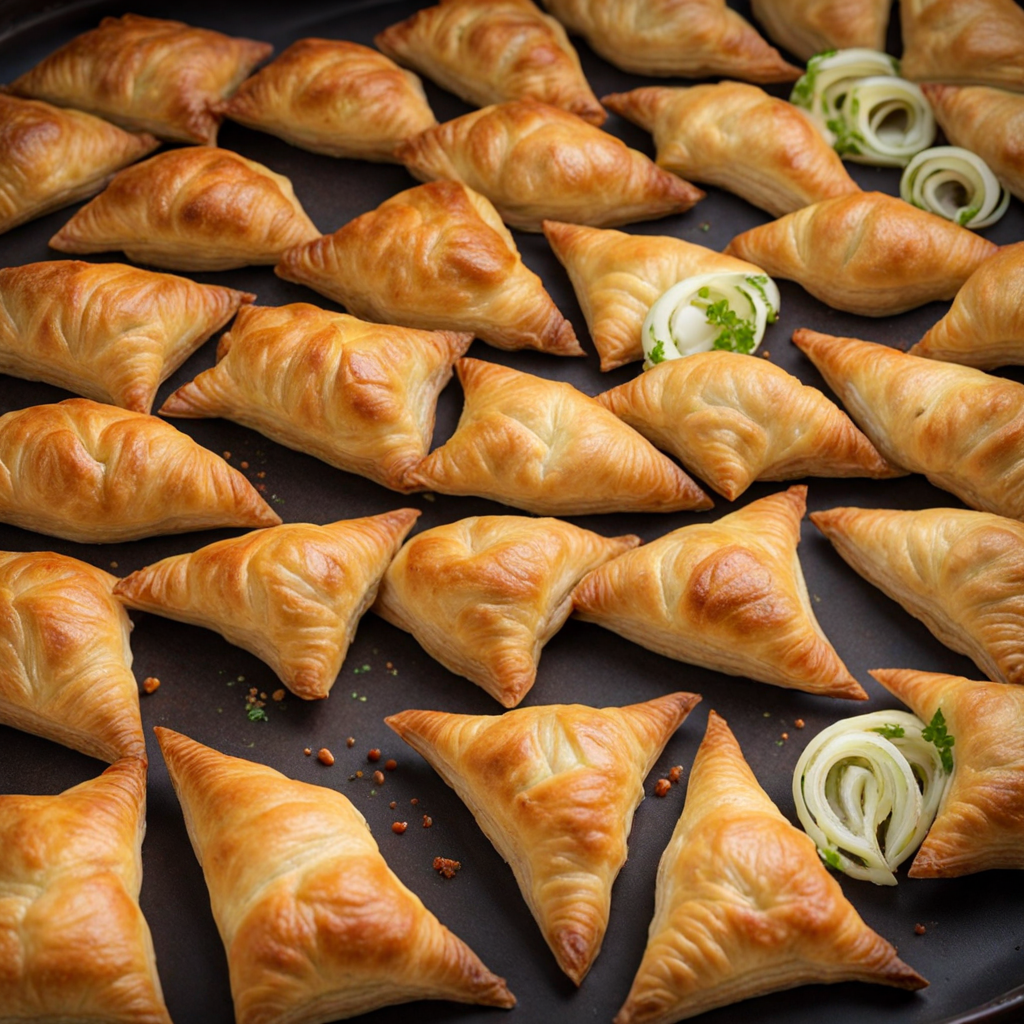Kovurma Lagman
Kovurma Lagman is a delightful and hearty dish that showcases the rich culinary heritage of Uzbekistan. At its core, Kovurma Lagman consists of hand-pulled noodles known as "lagman," which are expertly crafted to achieve a chewy and satisfying texture. These noodles serve as a perfect base for the dish, allowing them to soak up the vibrant flavors of the accompanying ingredients. The dish is typically adorned with a medley of sautéed vegetables and tender pieces of meat, often lamb or beef, which are cooked until they are succulent and infused with spices that evoke the essence of Central Asian cuisine. The preparation of Kovurma Lagman involves a careful balance of flavors, with ingredients such as bell peppers, carrots, and onions being stir-fried until they reach a sweet and aromatic state. The meat is seasoned with a variety of spices, including cumin and black pepper, which lend a warm and earthy undertone to the dish. The incorporation of fresh herbs, like cilantro and green onions, adds a burst of freshness that complements the rich and savory elements, creating a harmonious blend of tastes. Served steaming hot, Kovurma Lagman is often accompanied by a rich broth that enhances its flavor and adds moisture to the dish. The combination of the chewy noodles, tender meat, and aromatic vegetables creates a satisfying and comforting meal that is both filling and flavorful. This dish is a true representation of Uzbek hospitality, often enjoyed in gatherings with family and friends, making it a perfect choice for those seeking to explore new culinary horizons and indulge in the delightful tastes of Uzbekistan.
How It Became This Dish
The History of Ковурма Лагман: A Culinary Gem of Uzbekistan Origins and Early Influences Ковурма Лагман, a cherished dish of Uzbekistan, is a vibrant testament to the rich tapestry of Central Asian culinary traditions. Its origins can be traced back to the ancient Silk Road, a network of trade routes that connected East and West. This historic pathway facilitated not only the exchange of goods but also the sharing of culture, ideas, and, importantly, food. The name "Лагман" itself derives from the Chinese word "lāmiàn," which refers to hand-pulled noodles. As traders moved along the Silk Road, they carried with them their culinary practices, which evolved and adapted to local ingredients and tastes. In Uzbekistan, Лагман took on a unique character, influenced by the nomadic lifestyle of the Uzbek people and the agricultural bounty of the fertile Ferghana Valley. Cultural Significance The preparation and consumption of Ковурма Лагман go beyond mere nourishment; it is a ritual steeped in cultural significance. Traditionally, this dish is prepared during special occasions and family gatherings, symbolizing hospitality and community. The making of Лагман is often a communal activity, where family members come together to knead the dough, pull the noodles, and simmer the rich broth. This collaborative effort not only strengthens familial bonds but also preserves culinary traditions passed down through generations. In Uzbek culture, food is a pivotal part of social interactions. The act of sharing Ковурма Лагман is an expression of generosity and warmth. It is common to serve the dish to guests as a gesture of respect and welcome, making it a staple in both everyday meals and celebratory feasts. Ingredients and Preparation Ковурма Лагман is characterized by its hearty ingredients and robust flavors. The dish typically features hand-pulled noodles, a rich meat broth (often made with lamb or beef), and a colorful medley of vegetables, including bell peppers, tomatoes, onions, and carrots. Spices such as black pepper, cumin, and coriander enhance the dish's depth of flavor, while garlic adds an aromatic note. The preparation of Лагман is an art form in itself. The noodles are made from a simple mixture of flour, water, and salt, kneaded into a pliable dough, and then skillfully pulled into long strands. This process requires practice and finesse, as the texture of the noodles greatly influences the overall experience of the dish. The broth is prepared separately, with the meat simmering until tender and the vegetables sautéed until they release their natural sweetness. Finally, the noodles are cooked and combined with the broth and vegetables, creating a dish that is both visually appealing and deeply satisfying. Evolution Over Time As Uzbekistan's political landscape shifted through the centuries, so too did its culinary practices. The Russian Empire's expansion into Central Asia in the 19th century introduced new ingredients and cooking techniques to the region. While Ковурма Лагман retained its traditional essence, elements such as sour cream, potatoes, and even variations of the broth began to emerge, reflecting the evolving tastes and influences of a diverse population. The 20th century brought further changes, particularly with the establishment of the Soviet Union. During this time, many traditional dishes, including Ковурма Лагман, were standardized and commercialized. While this led to an increase in accessibility, it also caused some regional variations and unique interpretations of the dish to fade away. Following the dissolution of the Soviet Union in 1991, Uzbekistan experienced a cultural renaissance, marked by a renewed interest in traditional cuisine. Chefs and home cooks began to reclaim and celebrate their culinary heritage, leading to a revival of Ковурма Лагман in its authentic form. The dish became emblematic of national identity, representing the resilience and spirit of the Uzbek people. Modern-Day Popularity Today, Ковурма Лагман is enjoyed not only in Uzbekistan but also in neighboring countries and among global food enthusiasts. As Central Asian cuisine garners international interest, restaurants specializing in Uzbek dishes have started to emerge around the world. Chefs often put their spin on traditional recipes, incorporating modern cooking techniques while respecting the dish's cultural roots. In Uzbekistan, Лагман remains a beloved staple, featuring prominently in everyday meals, weddings, and festivals. Street vendors and local eateries serve it fresh, showcasing the dish's versatility and adaptability. Each region may have its specific variation, with different ingredients or methods of preparation, but the core elements of Ковурма Лагман—a filling broth, tender noodles, and colorful vegetables—remain consistent. Conclusion Ковурма Лагман is more than just a dish; it is a reflection of Uzbekistan's rich history, cultural heritage, and communal values. From its origins along the Silk Road to its modern-day prominence, this hearty meal encapsulates the journey of a people and their food. Whether enjoyed at a bustling market stall or a festive family gathering, Ковурма Лагман continues to be a source of pride for Uzbeks, symbolizing the strength of tradition and the joy of sharing a meal with loved ones. As global palates become increasingly diverse, Ковурма Лагман stands as a delicious reminder of the interconnectedness of culinary traditions and the enduring power of food to bring people together. Through each bowl of this delightful dish, one can savor not only the flavors of Uzbekistan but also the stories, history, and culture that have shaped it over centuries.
You may like
Discover local flavors from Uzbekistan


